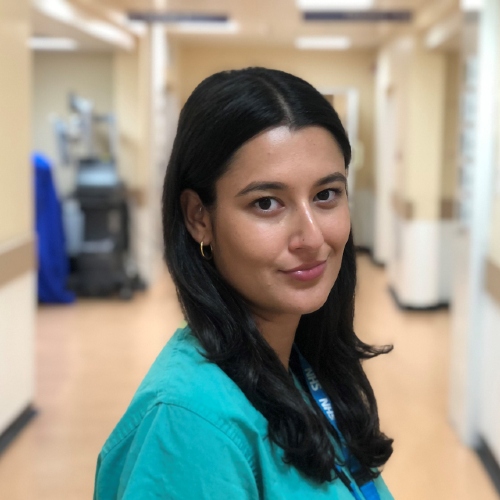As many of you are starting FY1, we've asked current Academic F2, Zarnigar Khan, to share some of the things she wishes she had known when in your shoes.
The Foundation Training programme
Following the completion of a medical degree, the next step in a doctor’s career journey is a two-year Foundation Training programme.
Foundation training allows nearly qualified doctors to transition from university to work in a supported environment that ensures patient safety.
As I approach the end of my first year as a foundation doctor, I’ve been reflecting on some of the highs and lows, as well as what is to come in F2. So, here are five things I wish I knew before I started F1.
1. Making referrals
One of the things I remember being most nervous about when I began F1 was speaking to other teams and making referrals. In the Trust I work in, most of our referrals are done via a computer application. There is also a paging system for more urgent referrals.
First things first, ask how to make referrals during your induction week. Find out which system is used in your Trust and get comfortable with it. I found making a list in a little notebook was useful, as I had something to refer to for each team. It was also useful to note down email addresses for secretaries.
Secondly, use a structure for when you make your referrals, especially when calling other teams to review a patient. I use the SBAR (Situation, Background, Assessment, Recommendation) technique and it has worked well for me. You’ll find your style and flow eventually.
2. Booking annual leave
Get your annual leave requests in early. I cannot recommend this enough. To do this, find out who your rota coordinator is early on. They should have made contact with you prior to F1 to send out your rota.
If not, you can always ask the foundation programme coordinator. If you have any family commitments or upcoming life events, it’s always best to give notice to the rota coordinators so they can bear this in mind when scheduling the rota. It will also help them look for swaps if you are on call.
3. Using phone applications
During F1, I used many apps on my phone to help with shifts, especially when I was on call. One of the most useful apps was MDCalc, which is a free online medical resource for healthcare professionals. It provides support for clinical decision-making, such as guidelines, scoring systems, algorithms and medical calculators.
Another useful app I used was Induction. You can register for free, and it provides the contact details for all specialities within your Trust. This was especially useful when looking for specific bleep numbers.
Lastly, I cannot recommend a rota app enough. I found this useful as it allowed me to keep track of all of my shifts in one calendar. The great thing is that some apps allow you to share your rota with others who use the same app. This made coordinating social events much easier.
4. Identifying sign-off opportunities
At the beginning of F1, we were given a list of things we needed to do in order to get signed off for F1 in the Annual Review of Clinical Practice (ARCP). Most of these sign-offs involve Mini-Cexs and Direct Observation of Procedural Skills. For F1, you are required to complete a certain number per rotation.
Firstly, make sure you are familiar with the sign-offs that are required. Secondly, be creative with your opportunities to get these sign-offs. I found clerking really useful for getting my Mini-Cex evaluations. When reviewing a patient, I would find a senior to present the patient to if this was appropriate. Following this, I could ask for sign-off.
If you’re teaching medical students while they are on placement, see this as an opportunity to get a teaching requirement signed off (while being observed by a senior colleague). Try not to leave all of your sign-offs until the last minute and document as you go.
5. Knowing that support is available
Starting F1 can be daunting, as it may be your first time in a work environment. It’s important to look after yourself and to speak up if things aren’t working for you. I found speaking to other F1s was helpful as we were able to share our experiences with one another.
If I needed any support in the workplace, my first port of call was my clinical supervisor or educational supervisor. If you don’t feel like you can speak with them, all Trusts have an F1 coordinator who may be able to point you in the right direction. You will also have access to a Guardian of Safe Working who can help you with issues such as frequently staying late.

